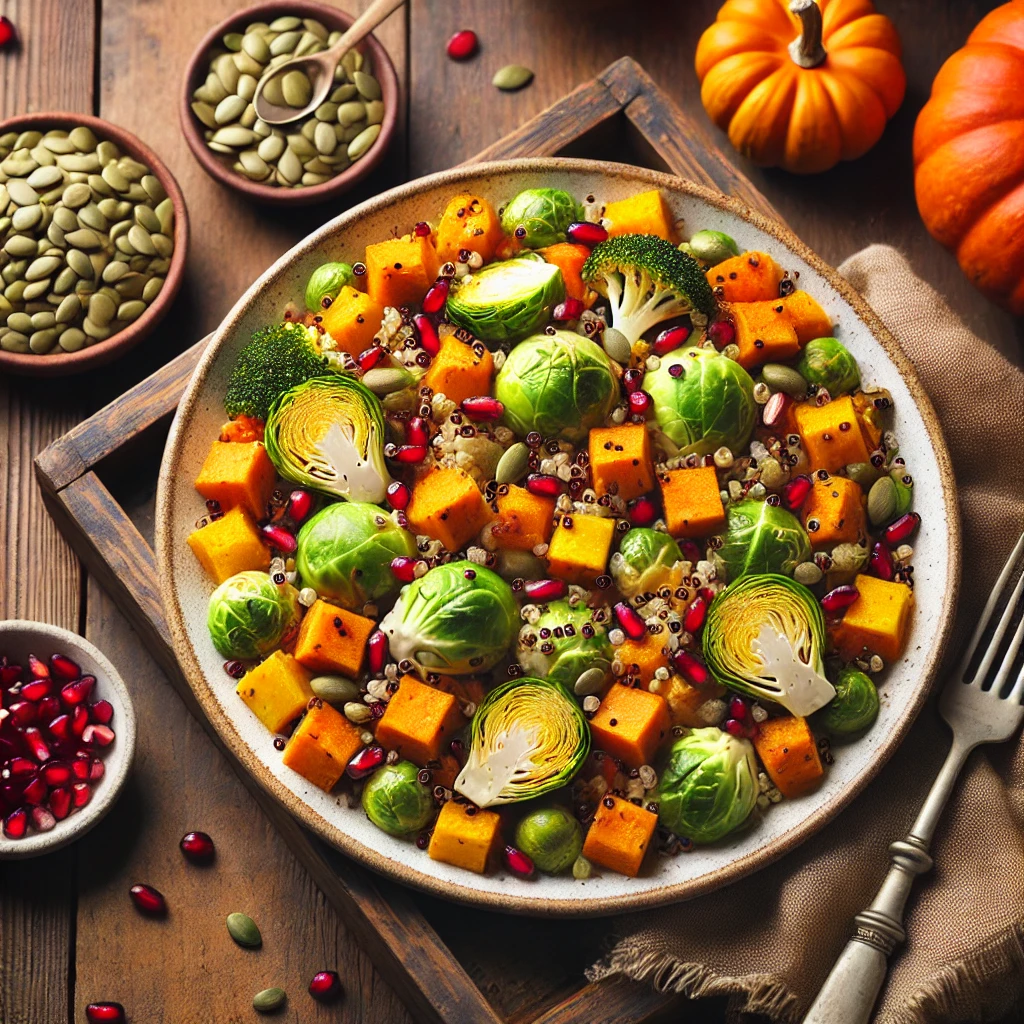Why Is Fiber Important and How to Incorporate It Into Your Day
Published on slyacademy.com
Key Takeaways:
- Fiber is essential for gut health, weight management, and reducing the risk of chronic diseases.
- Women should aim for 25 grams of fiber per day, while men should aim for 38 grams.
- There are two types of fiber: soluble and insoluble, both with unique health benefits.
- Great sources of fiber include fruits, vegetables, legumes, whole grains, and seeds.
Fiber often goes underappreciated despite its significant role in promoting good health. It not only aids in maintaining a healthy gut microbiome and ensuring smooth digestion but also plays a role in weight management, blood sugar control, and reducing the risk of several chronic diseases such as diabetes, heart disease, stroke, and even cancer. Here’s why fiber is critical for health and how you can effortlessly incorporate it into your meals.
What is Fiber?
Fiber is a type of carbohydrate that our body can’t fully digest. Unlike fats, proteins, and sugars that get broken down and absorbed, fiber largely passes through the digestive system intact. It is only found in plant-based foods like fruits, vegetables, grains, and legumes.
Fiber comes in two forms, each playing distinct but essential roles in the body:
Soluble Fiber
Soluble fiber dissolves in water, forming a gel-like substance during digestion. This type of fiber is found in foods like beans, oats, chia seeds, apples, and citrus fruits. It offers numerous benefits, such as:
- Stabilizing Blood Sugar: By slowing down the absorption of sugar, soluble fiber can prevent spikes and crashes in blood sugar levels.
- Reducing Cholesterol: Soluble fiber binds to cholesterol particles, helping to remove them from the body and supporting heart health.
- Promoting Satiety: The gel-like consistency slows digestion, keeping you fuller for longer.
Insoluble Fiber
In contrast, insoluble fiber does not dissolve in water. It remains intact as it moves through the digestive tract and helps form bulkier, softer stools, which ease bowel movements. Found in whole grains, nuts, seeds, and many vegetables, insoluble fiber helps:
- Promote Regularity: This type of fiber supports digestive health and helps prevent constipation.
- Maintain Gut Health: It works like a natural broom, cleaning the digestive tract and reducing the risk of conditions like diverticulitis and hemorrhoids.
How Much Fiber Do You Need?
The Academy of Nutrition and Dietetics recommends that women aim for at least 25 grams of fiber daily and men aim for 38 grams daily. Tracking your intake through a nutrition app like MyFitnessPal can help you monitor and optimize your fiber intake. Remember, if you’re increasing your fiber intake, do it gradually to avoid bloating and discomfort, and ensure you stay well-hydrated.
High-Fiber Foods to Include in Your Diet
Incorporating a variety of fiber-rich foods throughout your meals is crucial. Here are some excellent sources of both soluble and insoluble fiber:
Soluble Fiber Sources
- Beans and Lentils: Black beans, chickpeas, and lentils are packed with fiber and protein.
- Chia and Flaxseeds: These seeds can be easily added to smoothies, yogurt, or oatmeal.
- Fruits: Apples, pears, berries, and citrus fruits are excellent sources.
- Oats and Barley: Whole grains like oats provide a hearty dose of fiber.
Insoluble Fiber Sources
- Whole Grains: Brown rice, whole-grain bread, and cereals are rich in insoluble fiber.
- Vegetables: Leafy greens, broccoli, and root vegetables such as carrots and beets provide insoluble fiber.
- Nuts and Seeds: Almonds, walnuts, and sunflower seeds are easy to snack on for a fiber boost.
How to Incorporate More Fiber Into Your Day
Getting the recommended amount of fiber doesn’t have to be challenging. Here are some easy strategies to help you reach your daily fiber goals:
- Leave the Skin On: Whenever possible, eat fruits and vegetables with their skins, such as apples and potatoes, for a fiber boost.
- Add Beans to Meals: Incorporate beans into salads, soups, or as a side dish.
- Sprinkle Seeds: Top salads, yogurt, and smoothies with chia, hemp, or flaxseeds.
- Switch to Whole Grains: Choose whole-grain breads, pastas, and cereals over refined options.
- Try New Recipes: Bake with high-fiber flours like chickpea or buckwheat for a nutrient-dense twist.
Sample High-Fiber Meal Plan
Here’s a simple day of meals that provide 38 grams of fiber:
Breakfast
- 1/2 cup oatmeal with sliced banana (8g fiber)
- 1/4 cup chopped walnuts (2g fiber)
Lunch
- Salad with mixed greens, 1/2 cup chickpeas, assorted vegetables, and a vinaigrette dressing (13g fiber)
- 1 medium apple (4g fiber)
Snack
- 1 cup raw carrots with 2 tablespoons hummus (5g fiber)
Dinner
- Grilled salmon with 1 cup roasted broccoli and 1 baked sweet potato (6g fiber)
The Bottom Line
Getting enough fiber in your diet has been linked to numerous health benefits, from reducing your risk of chronic disease to promoting a healthy weight. By incorporating more fruits, vegetables, nuts, seeds, legumes, and whole grains, you can ensure you’re meeting your fiber needs while enjoying delicious meals.
For more nutrition tips and meal plans, visit slyacademy.com.







